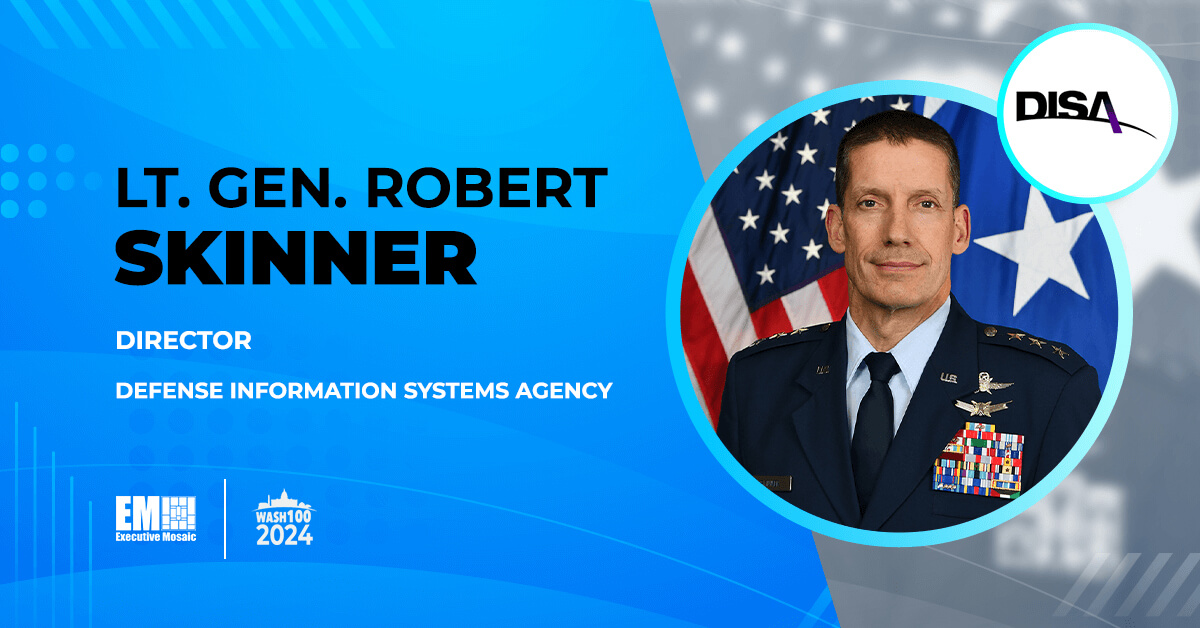The advancement of generative artificial intelligence in the last year or two has dramatically altered the possibilities, threats and opportunities posed by AI technologies. ECS President John Heneghan took us into the world of AI, gen AI and data in the public sector in his latest Executive Spotlight interview.
Heneghan, a three-time Wash100 Award winner, spoke about the future of the AI market, the Department of Defense’s most promising AI programs, the challenge of processing huge troves of data and more. Read below for the full interview.
Tell me about the current state of the artificial intelligence market. Where are you seeing new opportunities in AI, and where do you think the market is heading?


First, thank you Summer for the opportunity to share my perspective with your audience. Regarding the AI market, we are continuing to see extremely rapid expansion of AI into all aspects of life — from marketing and entertainment, to health and defense. We expect to continue seeing significant investment in and improvements in the speed and capabilities of AI.
Generative AI is a major focus today. Almost every product field is exploring how to add gen AI to make it easier to interact with their product. And government is no different. We are seeing major advances in health AI, especially in diagnostic fields like radiology where some studies show they are exceeding human capabilities. We are also seeing increased requirements in the field of autonomy, which includes autonomous vehicles and robotics. Our DOD customers are heavily focused on autonomous platforms for ISR.
New opportunities for AI are everywhere. Of course, we still have customers focused on business process automation, IT service automation solutions and leveraging AI to free up time and money in their organizations to focus on more strategic activities. Customers are looking for us to help them advance the state of the art, demanding absolute maximum performance from the AI, particularly those focused on facets of our strategic competition with China and others.
DOD autonomy missions like the Replicator program are a great view of how DOD will leverage AI. All-domain, attritable autonomy is leveraging AI to increase the capabilities, power, velocity and advantage of our warfighters in defending aggression.
Other DOD, homeland security, health and civilian customers are asking us to focus on democratizing data and AI, pushing information and AI models out to users across the organization to enable data-driven decisions at all levels. In the VA, where we just won our T4NG2 contract, AI will be critical to improving health outcomes and benefit services for our veterans. We’re working to support them in predictive analytics, clinical decision support and automation to shift spending from administrative functions to clinical services.
Across other citizen-centric services such as VA, CMS, SSA and IRS, AI is being implemented to improve service delivery and identify fraud while saving taxpayers money. We are also supporting our customers with AI governance challenges to ensure responsible and ethical AI. Challenges will only grow in importance as AI becomes more deeply integrated into government services.
We know federal agencies continue to see a massive influx of data, but AI has proven to be useful in processing large amounts of data. Can you speak more about the relationship between data and AI? How does ECS approach this dynamic?
That is right, Summer, there is no AI without data. AI relies upon data to draw conclusions or determine a course of action. As such, data access and data quality is a critical factor in the success of AI and machine learning. AI is able to process immense amounts of data much faster than humans can, and often more accurately. Think cyber data and computer vision. More data is captured in a day than an army of people could review in a year.
Our customers’ limited ability to process captured data has long constrained our desire to capture more and more data. Why capture data — paying for sensors and storage, etc. — for data that will likely never get used. But with AI processing huge amounts of data at tremendous speed and accuracy, we’ve seen the demand for data skyrocket. Think IoT, computer vision, internet use logging, network flows and more.
We’re working with customers on end to end solutions to data and AI. This is a huge topic, but essentially, we’re helping them identify the information they need to support fast and accurate decision-making. Then we help them to identify and manage the data they have and to apply it to the key information needs. We also identify gaps in their data collection and help them address those gaps with new sensors or data flows. We are building distributed and federated data architectures such as the data mesh architecture we discussed in our last conversation to make the data available and secure across organizations as appropriate for the role of the user.
But the key is, once you have the data, you have to use it to achieve the mission. You have to turn it into insight, then push that insight out to decision makers across the organization. Our solutions are focused there — mission insight drives the solution.
I’d also point out that while technology is obviously an important component, we also work with our customers to develop organizational change management, communication strategies and action plans and establish necessary business processes and governance to implement and deploy AI solutions. This prevents an organization from having to restart or completely abandon an AI project due to poor planning or mismanaged expectations.
John, since we last spoke, a lot has changed in the AI world! Generative AI has been the source of a major AI boom in the last year, but some of these tools are also proving to be risky. Can you talk about how gen AI is changing the landscape? What opportunities or threats is this unlocking?
As mentioned earlier, generative AI is accelerating the discoveries we can make with data. It can potentially lead us into new areas of interest and make better-informed decisions more efficiently. However, with any new opportunity comes risk.
For example, the potential for bias in the data, results or their interpretation can lead to poor and potentially harmful decisions being made. Transparency, oversight and keeping a ‘human-in-the-loop’ are needed to reduce risks and biases, identify other potential weaknesses and ensure explainability.
From a security perspective, reduced barriers of entry to generative AI can allow malicious actors to introduce cyber threats into an organization through methods such as deep fakes, audio impersonations and spear phishing. Additionally, data leakage is another concern that can occur without establishing the proper procedures and safeguards when implementing and using generative AI.
Let’s talk about how this relates to cybersecurity. How do you think cybersecurity will have to evolve to stay ahead of threats posed by AI or gen AI tools?
Cyber defenders’ challenge has always been staying in front of the ever-changing cyber threats and increasingly creative threat actors — actors buoyed by the proliferation of better, faster technologies. AI is stoking the fire and is accelerating the pace of changes in the threat landscape and gen AI is better arming bad actors in their attacks.
But, cyber defenders are making use of these same AI technologies in zero trust solutions that not only identify vulnerabilities in the attack surface but also to quickly learn patterns of behavior and key indicators in the digital footprints left behind in malicious code or deep fakes. We are building solutions that leverage AI technology to identify and auto-remediate against threats and also provide counter offensive and forensic measures. Our cyber experts can be just as creative in leveraging the power of AI.
And as we look, Summer, to the near horizon, we are preparing for threats to be supercharged further using quantum technologies, and we are building cyber solutions to enable our customers’ readiness to thwart these threats — an area I am sure we will be talking about in future conversations.
Again, I’ll finish as I did when we last spoke. I believe this is a period of great challenge, uncertainty and change for our government customers. It’s an exciting time, because I believe the government, ECS and our fellow purpose-driven government IT consulting firms like us are up to the challenges ahead.







